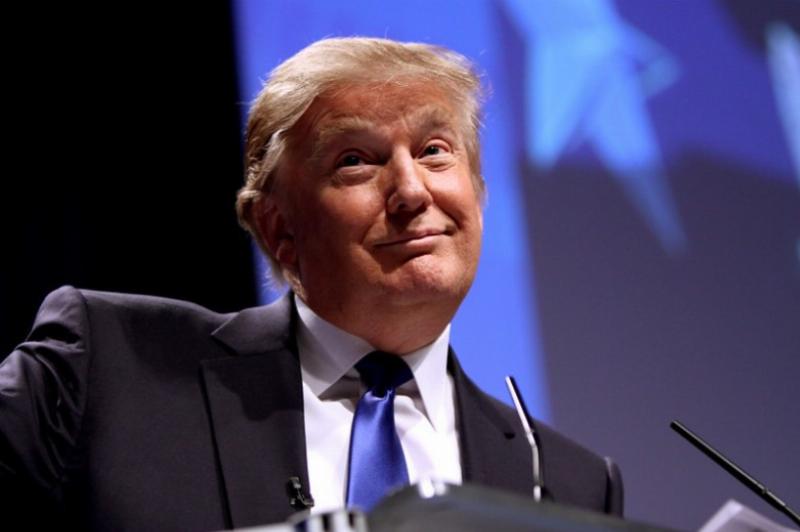


On Tuesday, President Donald Trump proposed transforming the war-torn Gaza Strip into a “Riviera,” an idea that might be nothing more than the Mideast version of his 25-percent tariff threat for Canada and Mexico, which immediately got positive results. Yet, even though Trump’s Gaza “solution” to an age-old problem has many critics and serious challenges, we ought to praise him for thinking outside the box, while making his advisers wary of the literal implications of his recent pronouncement.
At a press conference following his meeting with Israeli prime minister Benjamin Netanyahu, Mr. Trump shocked the world by proposing that “the U.S. will take over the Gaza Strip. ... We’ll own it and will be responsible for dismantling all of the dangerous unexploded bombs and other weapons on the site. We’ll level the site and get rid of all the destroyed buildings. Just level it out and create an economic development that will supply unlimited numbers of jobs and housing for the people of the area.”
Mr. Trump explained that he proposes to “do something different” with the Gaza Strip. After all, as the president elaborated, you “just can’t go back [to how it was]. If you go back, it’s going to end up the same way it has for a hundred years.”
There is truth to the president’s conclusion. The struggle for the Land of Israel is as old as the Bible. After all, the Jews have fought over that land since Moses led the nation of Israel out of Egypt to resettle in the Promised Land three thousand years ago.
Further, we shouldn’t be surprised by Mr. Trump’s radical proposal. It is consistent with his previous record of reshaping the Mideast political landscape. In his first term, he created the historic Abraham Accords, whereby four Arab countries made peace with Israel. He moved the U.S. embassy to Jerusalem; recognized Israel’s sovereignty over the Golan Heights; and withdrew from the Obama-era Iran nuclear deal, saying, “This is the worst deal I’ve ever seen.”
Predictably, the international reaction to his Gaza proposal was swift, much like opposition to his decisions in the first term. Turkey called the Gaza idea “unacceptable,” and France claimed it risked destabilizing the Mideast. China, Russia, Spain, and the United Kingdom said they support the two-state solution that historically formed the basis for Washington’s Mideast policy for decades.
The ongoing Gaza war came about because 15 months ago, the terror group Hamas, an Iranian proxy, attacked into southern Israel from the Gaza Strip to murder 1,200 innocent people and kidnap 250. That was just the latest edition of the fight between Israel and Arabs since the Jewish state’s re-establishment in 1948, and if something doesn’t change, it will happen again.
Below are key challenges to President Trump’s Gaza proposal, if it is to be taken seriously.
First, most of those people won’t volunteer to leave. Therefore, forcibly removing the population from Gaza to create Mr. Trump’s “Riviera” will be labeled by much of the world as ethnic cleansing and could involve serious human rights abuses.
Understand, most Gazans won’t even accept monetary compensation to leave. Even if they did take the money, fresh funds in the pockets of refugees would simply inflate real estate in Amman and Cairo, which is already saturated with Iraqi and Sudanese refugee dollars.
Second, neighbors Egypt and Jordan, both good allies in our fight against Iran, are unlikely to welcome two million fresh Palestinian refugees. Doing so risks destabilizing both countries because it would breathe legitimacy into the Muslim Brotherhood’s challenge to the throne in Jordan and to power in Egypt.
Further, there is a high probability that many of those new refugees would end up in the U.S. and Canada. The power of the Palestinian grievance will further inflame leftist activities in the U.S., and we will pay in our own streets for lifting this burden from the Israelis. We ought to accept that fact that Palestine is a curse best left to the Israelis to lift.
Finally, Hamas has yet to be destroyed. Therefore, Gaza’s rubble can’t be removed to restart building until all terrorists are completely removed. Does Mr. Trump expect Israel to complete that effort before the U.S. takes over the strip, or is that a burden our military must embrace?
These challenges are real and must be faithfully assessed before any long-term solution is undertaken, especially if President Trump is serious about the proposed Gaza “Riviera.”
Alternatively, Mr. Trump’s proposal might just be his effort to draw attention to a serious problem. If so, it obviously earned widespread anxiety, and now, just perhaps, it provides a starting place for talks that hopefully lead to a long-term solution to the heretofore intractable differences between the Israelis and Arabs.
Mr. Maginnis is a retired U.S. Army officer and the author of a dozen books, to include the just released Preparing for World War III: A Global Conflict That Redefines Tomorrow. He has visited Israel and the region numerous times.
<img 5440390625="" a="" alt="
Image: Gage Skidmore via <a data-cke-saved-href=" by-sa="" captext="<a data-cke-saved-href=" cc="" gage="" gageskidmore="" href="https://creativecommons.org/licenses/by-sa/2.0/legalcode" https:="" photos="" src="https://images.americanthinker.com/imported/2024-03/252527_640.jpeg" strong="" www.flickr.com="" width="100%" height="auto">
Image: Gage Skidmore via Flickr, CC BY-SA 2.0.
